Top 7 Skills You Need to Succeed in Affiliate Marketing
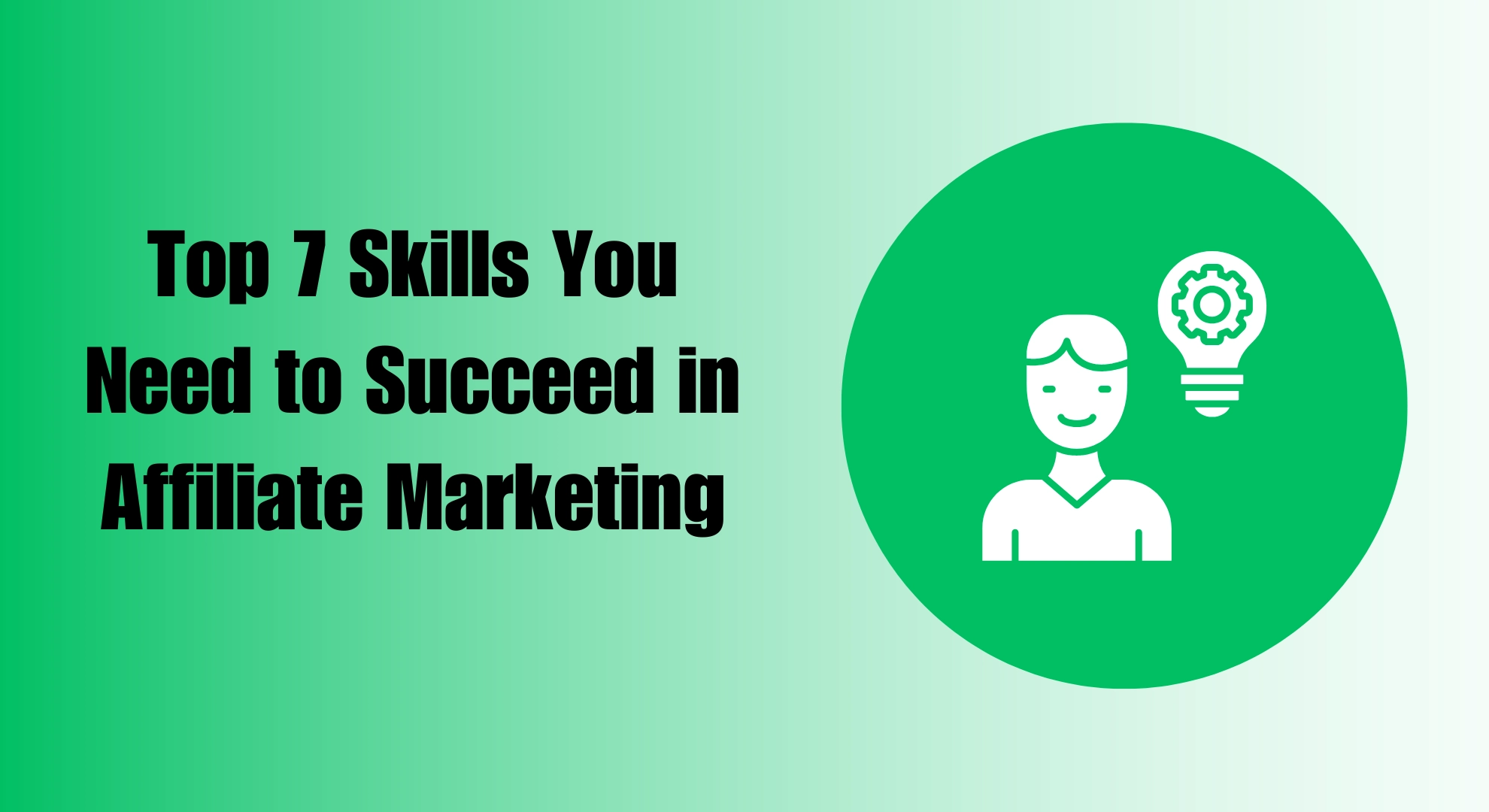
Signing up for affiliate programs and dropping links won’t make you money. If it were that easy, everyone would be doing it. Success in affiliate marketing comes down to skill—not luck.
Think of it like running a real business. You need to attract the right audience, earn their trust, and give them a reason to take action. That takes more than just promoting random products.
It requires strong content, smart marketing, and an understanding of what makes people click.
That’s why developing the right skills matters. Without them, you’re guessing. With them, you can build a business that grows consistently.
Here are the seven skills that will set you apart:
- Content Creation & Copywriting – Crafting engaging content that drives conversions.
- SEO & Keyword Research – Ranking higher on search engines for organic traffic.
- Social Media & Community Building – Growing an engaged audience across platforms.
- Email Marketing & Lead Nurturing – Building long-term relationships with subscribers.
- Paid Advertising & Traffic Generation – Running effective PPC campaigns.
- Data Analysis & Performance Tracking – Understanding what works and optimizing results.
- Sales & Relationship Building – Earning trust and increasing conversions.
Mastering these skills makes all the difference between struggling and building a sustainable affiliate business.
Want to break into affiliate marketing the right way? Join my 7-day free email course and learn the top skills you need to build a profitable business. Get real, actionable strategies to help you start earning. Sign up now and take the first step toward success!
The Top Skills You Need to Succeed in Affiliate Marketing
Success in affiliate marketing comes down to having the right skills and using them effectively. Here’s what you need to master. Let’s break each one down.
1. Content Creation & Copywriting

Affiliate marketing runs on content. If you can’t grab attention and hold interest, people won’t click, trust, or buy. Content is how you connect with your audience, build credibility, and guide them toward a purchase.
But here’s the thing—content isn’t just words on a page. It’s about delivering real value in a way that keeps people engaged. If you can master this skill, you’ll stand out from the sea of marketers pushing generic promotions.
Why Strong Content Matters
- Gets People to Click – A well-written headline or video title sparks curiosity.
- Keeps Them Reading or Watching – If your content is interesting, people stick around.
- Builds Trust – Helpful, honest content positions you as a reliable source.
- Drives Conversions – If people see the value in what you’re promoting, they buy.
Think of content as the foundation of your affiliate business. Without it, all the best strategies in the world won’t help.
How to Create Content That Converts
Creating content that converts goes beyond just writing articles or making videos. It’s about engaging your audience, solving problems, and guiding them toward the right products.
Whether it’s a blog post, video, or social media post, your content should build trust and drive action. Here’s how to make it happen.
1. Write for People, Not Just Algorithms
SEO is important, but if your content sounds robotic, people will leave. Instead of stuffing keywords into every sentence, focus on natural writing.
Google rewards content that keeps people engaged—not just posts packed with keywords.
Example:
- Bad: “Best protein powder for muscle gain. Buy this best protein powder now.”
- Good: “Need a protein boost? This one helps build muscle and keeps you full longer.”
Use relevant keywords, but always write like you’re talking to a real person.
2. Tell a Story
Stories create emotional connections. Instead of just listing product features, share a quick personal experience or an example of how the product solves a problem.
Example:
Instead of saying:
“This standing desk is adjustable and ergonomic.”
Try this:
“I used to get back pain from sitting all day, but switching to this adjustable desk made a huge difference. Now I can stand when I need to and stay comfortable.”
People relate to stories. They see themselves in the situation and imagine how the product will help them too.
3. Focus on Benefits, Not Just Features
A big mistake? Listing what a product does instead of explaining why it matters. Features are facts. Benefits show how those facts improve someone’s life.
Example:
- Feature: “This protein powder has 25g of protein per serving.”
- Benefit: “Build muscle faster and stay full longer with 25g of high-quality protein.”
Benefits connect with emotions, which drive buying decisions.
4. Use Persuasive Calls to Action (CTAs)
Never assume people know what to do next. Tell them. The best CTAs are clear, direct, and action-driven.
Examples:
- Weak CTA: “Check out this product.”
- Strong CTA: “Click here to grab yours before the discount expires!”
Urgency and clarity matter. Make sure people know what action to take and why they should take it now.
Read Also: Understanding Calls to Action and Their Importance in Affiliate Marketing
5. Make It Scannable
Most people skim instead of reading every word. If your content is a giant block of text, they’ll leave before they even start. Break things up to keep them engaged.
- Use short paragraphs
- Add subheadings to separate sections
- Use bullet points for key takeaways
- Bold or highlight important points
Example:
Instead of:
“This laptop has a long battery life, fast processor, and lightweight design. It’s great for working on the go, gaming, and watching movies.”
Try this:
- Battery life: Lasts up to 12 hours per charge.
- Speed: Powerful processor for multitasking.
- Lightweight: Easy to carry anywhere.
See the difference? It’s easier to read, and the key points stand out.
Content creation and copywriting aren’t just nice-to-have skills in affiliate marketing—they’re essential. If you can’t create engaging content, nothing else will work.
- Learn SEO writing to attract traffic.
- Use storytelling to connect with your audience.
- Focus on benefits to make your offers compelling.
- Write clear CTAs so people know what to do next.
- Format content properly to keep readers engaged.
Master these, and you’ll be miles ahead of most affiliate marketers.
Read More: Why Valuable Content Wins in Affiliate Marketing (And How to Create It)
Struggling to create content that drives traffic and sales? We craft SEO-optimized blog posts, persuasive sales pages, and engaging social media content that turns readers into buyers. Let’s boost your brand with content that works—let’s talk.
2. SEO & Keyword Research
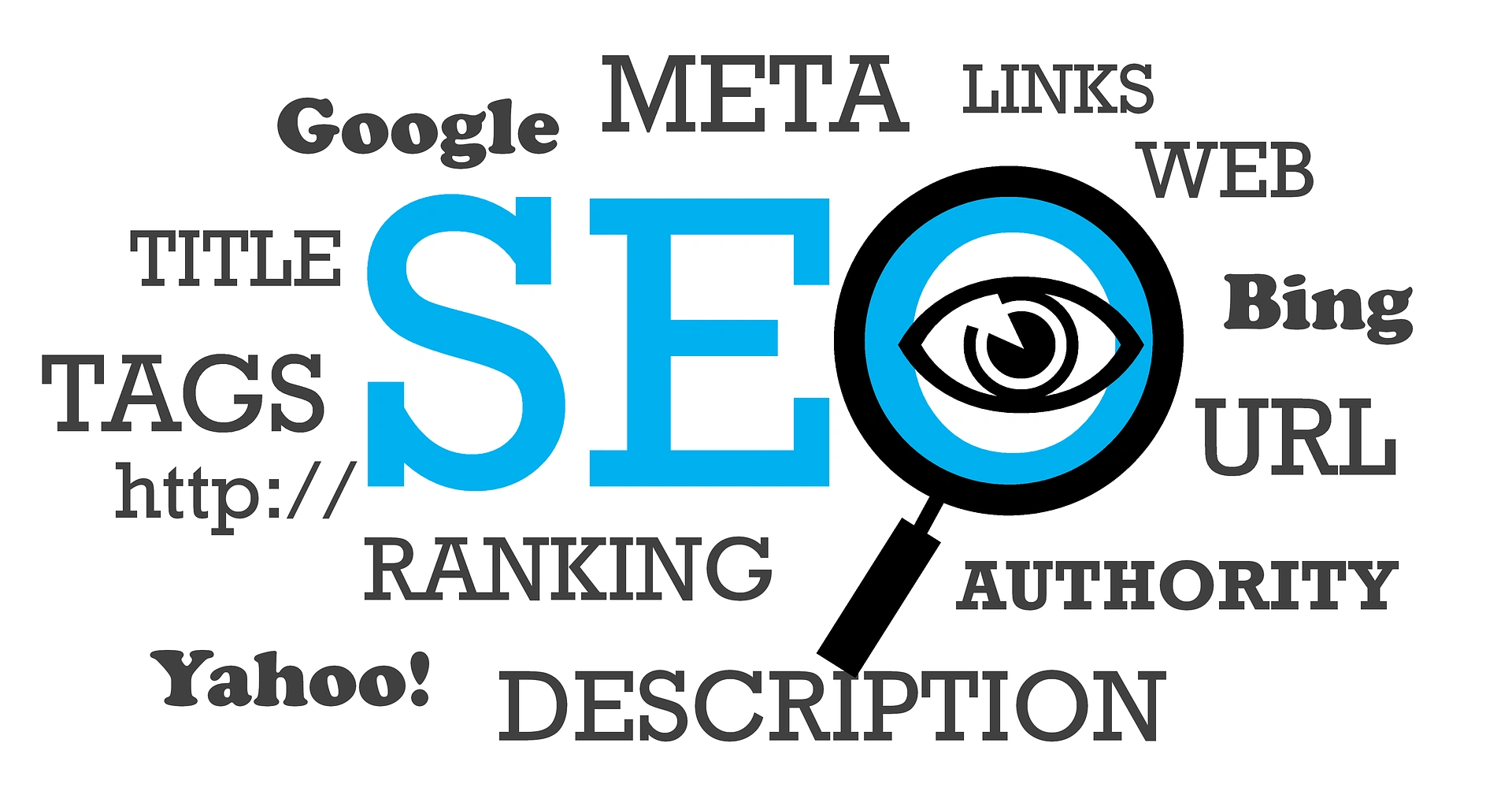
If no one finds your content, it doesn’t matter how good it is. That’s why SEO and keyword research matter. They help you rank higher in search results and bring in organic traffic—the kind that doesn’t require paid ads.
Why SEO and Keyword Research Matter
Search engines like Google or Bing decide which pages show up when someone searches for something. If your content ranks high, you get free, consistent traffic.
The right keywords help you attract people who are already looking for what you offer.
Think of it like fishing. You need the right bait (keywords) to attract the right fish (your audience). If you target the wrong keywords, you either get no traffic or attract the wrong people—ones who won’t click, read, or buy.
Finding the Right Keywords
Not all keywords are the same. Some are highly competitive, making it hard to rank. Others might be too niche, bringing in little traffic. The trick is to find keywords with a balance—ones with enough searches but not too much competition.
Here’s how:
- Start with Long-Tail Keywords: These are longer phrases with lower competition, like “best budget gaming laptops” instead of just “gaming laptops.”
- Look for Buyer Intent: Some keywords signal interest, while others signal buying intent. “Best protein powder” attracts researchers. “Buy whey protein online” attracts buyers.
- Analyze Search Volume & Difficulty: High search volume is great, but if a keyword is too competitive, ranking for it will be tough.
Tools That Help with SEO & Keyword Research
Choosing the right tools makes keyword research easier and more effective. Each tool has its strengths, and knowing how to use them can save time and effort. Here’s a breakdown of the best options:
(a). Ubersuggest – Beginner-Friendly & Budget-Friendly
Ubersuggest is a simple, affordable tool that helps you find keyword ideas and check their search volume, competition, and trends. It’s great for beginners because of its easy-to-use interface.
What it does:
- Suggests long-tail keywords based on a seed keyword.
- Shows search volume, SEO difficulty, and paid competition.
- Provides content ideas based on top-ranking pages.
- Offers a free version with limited searches per day.
Best for: Affiliate marketers who want quick keyword insights without a steep learning curve or spending more.
(b). KWFinder – Best for Low-Competition Keywords
KWFinder specializes in finding keywords that are easier to rank for. It highlights long-tail keywords with low difficulty, making it perfect for targeting niche audiences.
What it does:
- Finds long-tail keywords with low SEO competition.
- Shows detailed keyword metrics, including trends and search volume.
- Provides SERP (Search Engine Results Page) analysis to check the competition.
- Lets you analyze competitors’ top-performing keywords.
Best for: Those who focus on niche marketing and need low-competition keywords to rank faster.
(c). Ahrefs – Comprehensive SEO Tool for Deep Research
Ahrefs is an advanced tool for serious marketers. It’s best known for its backlink analysis but also has powerful keyword research features.
What it does:
- Finds keyword difficulty scores, search volume, and traffic potential.
- Shows competitors’ ranking keywords and backlinks.
- Tracks rankings over time.
- Analyzes backlink opportunities to boost rankings.
Best for: SEO professionals and marketers who need in-depth data on keyword difficulty, backlinks, and competitor insights.
(d) SEMrush – All-in-One Marketing Suite
SEMrush is more than just a keyword tool. It’s a full marketing suite that covers SEO, paid ads, social media, and competitor research.
What it does:
- Provides keyword ideas, search volume, and competition analysis.
- Tracks keyword rankings and website performance.
- Helps with PPC (pay-per-click) keyword research.
- Analyzes competitors’ ad strategies and SEO tactics.
Best for: Marketers who need an all-in-one tool to manage SEO, PPC, and competitive research in one place.
(e). Google Keyword Planner – Free & Reliable
Google Keyword Planner is a free tool inside Google Ads. It’s designed for advertisers but also works for organic keyword research.
What it does:
- Shows search volume and competition for keywords.
- Suggests keyword variations based on user searches.
- Gives estimated cost-per-click (CPC) for PPC campaigns.
- Works best when linked to a Google Ads account.
Best for: Beginners who need a free tool to get basic keyword insights directly from Google.
Which Tool Should You Use?
- Beginners: Start with Ubersuggest or Google Keyword Planner.
- Niche marketers: Use KWFinder to find easy-to-rank keywords.
- Serious SEOs: Ahrefs and SEMrush offer deep insights for advanced strategies.
The right tool depends on your needs, budget, and how deep you want to go with SEO.
SEO isn’t a one-time thing. It’s an ongoing process. If you keep refining your keyword strategy, you’ll see better rankings, more traffic, and more conversions.
Continue Reading: 10 Most Powerful SEO Tools Every Affiliate Marketer Needs to Boost Rankings and Earnings
3. Social Media & Community Building
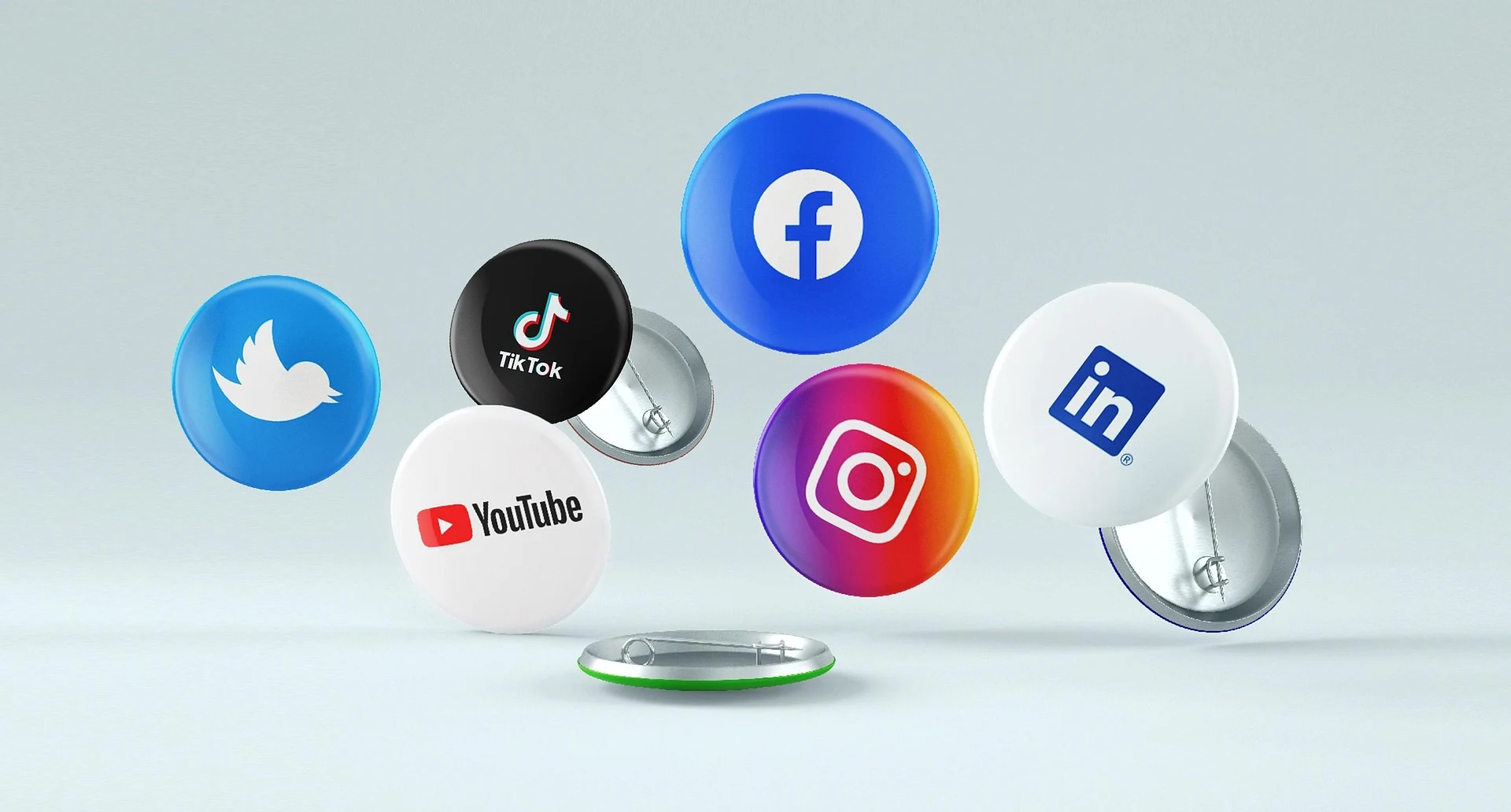
Social media is one of the best ways to grow an audience and drive traffic. Platforms like YouTube, Instagram, and Facebook help build trust, connect with followers, and generate clicks. But simply posting isn’t enough—you need consistency, engagement, and valuable content to stand out.
Choosing the Right Platform
Each platform works differently, so pick the one that fits your style and audience.
For instance,
- YouTube – Great for tutorials, reviews, and long-form content. Video builds trust fast.
- Instagram – Best for visual content like infographics, reels, and stories. Perfect for personal branding.
- Facebook – Good for niche communities, groups, and direct engagement. Works well for discussions and Q&A.
Trying to master all platforms at once can be overwhelming. Start with one or two, get comfortable, then expand.
Consistency: Post Regularly
Success on social media comes from showing up. Posting once in a while won’t help—you need a schedule.
I recommend…
- On YouTube, aim for at least two videos per week.
- On Instagram, post daily or a few times per week. Use reels and stories to stay visible.
- On Facebook, engage in groups several times a week and post valuable content.
Stick to a routine so your audience knows when to expect new content.
Engagement: Talk to Your Audience
Social media isn’t just about posting alone but also about conversations. People follow creators who respond, interact, and show personality.
- Reply to comments – Answer questions and acknowledge feedback.
- Ask questions – Encourage discussions to keep people engaged.
- Go live – Host live Q&A sessions or casual chats to build a stronger connection.
The more you engage, the more trust you build. And trust leads to clicks and conversions.
Valuable Content: Give, Don’t Just Sell
If all you do is push affiliate links, people will ignore you. Instead, give value first. Help people, educate them, and make their lives easier.
- YouTube: Create helpful videos like “Best Tools for Beginners” or “How to Solve [Problem]”.
- Instagram: Share quick tips, behind-the-scenes content, or motivational posts.
- Facebook: Offer advice in groups, post helpful guides, or share your experiences.
Once people see you as a trusted source, they’ll naturally check out your recommendations.
Social media works when you use it the right way. Pick a platform, stay consistent, engage with people, and share useful content. Over time, you’ll build a loyal community that listens, trusts, and takes action.
4. Email Marketing & Lead Nurturing

Building an email list is one of the smartest moves in affiliate marketing. Social media algorithms change, and websites lose traffic, but an email list is yours to control. It gives you direct access to your audience, helping you build trust, nurture relationships, and drive consistent sales over time.
If you’re not growing an email list, you’re leaving money on the table.
Why an Email List Matters
Social media followers come and go, and search rankings fluctuate, but emails land directly in inboxes. That’s personal and powerful.
- More Control – No worrying about algorithm changes killing your traffic.
- Higher Conversions – Email marketing consistently outperforms social media in sales.
- Stronger Relationships – Sending helpful emails builds trust over time.
Affiliate marketers who focus only on social media risk losing everything if their accounts get restricted or their reach drops. With an email list, your audience stays with you.
Strategies to Grow & Nurture Your List
Building an email list is one thing, but keeping subscribers engaged is what really matters. It’s not just about growing numbers but about attracting the right audience, building trust, and providing value.
With the right approach, you can turn subscribers into loyal followers and customers. Here’s how to do it.
1. Create a Lead Magnet (Give People a Reason to Subscribe)
People don’t give away their email for no reason. You need to offer value upfront.
A lead magnet is a freebie that solves a problem or teaches something useful.
- eBooks & Guides – Example: “10 Proven Ways to Make Your First $1,000 in Affiliate Marketing.”
- Checklists & Templates – Example: “SEO Checklist for Ranking on Google.”
- Exclusive Video Training – Example: “Step-by-Step Affiliate Funnel Setup.”
- Discounts or Bonuses – If promoting a product, offer a special deal for subscribers.
The key? Make it relevant to what you promote. If you talk about SEO, offer an SEO checklist. If you promote online courses, give away a course discount.
2. Write Effective Email Sequences
Once people join your list, don’t just send random emails—have a plan.
A good email sequence guides subscribers from interest to action. Here’s a simple structure:
- Welcome Email – Thank them, deliver the lead magnet, introduce yourself.
- Value Emails (1-3 emails) – Share useful tips, personal stories, or case studies. No hard selling yet.
- Soft Pitch Email – Mention an affiliate product as a helpful resource.
- Follow-Up Email – Answer common objections, show proof, or offer a bonus.
- Final Reminder – Create urgency (limited-time offer, bonus expiring, etc.).
Each email should feel like a real conversation, not just a sales pitch. Be helpful first, sell later.
3. Build Trust with Your Subscribers
People buy from those they trust. If every email is just an ad, people will unsubscribe.
Here’s how to keep them engaged:
- Send valuable content regularly – Not just promotions. Share insights, success stories, and actionable tips.
- Be personal – Write like you’re talking to a friend, not a faceless crowd.
- Stay consistent – Don’t disappear for months. Set a schedule and stick to it.
- Engage your list – Ask questions, encourage replies, and interact with subscribers.
When people know, like, and trust you, they’ll be more likely to buy what you recommend.
Best Email Marketing Tools
Using the right tools makes email marketing easier. Here are three solid options:
1. ConvertKit
- Best for bloggers and content creators.
- Simple automation and landing pages.
- Clean and easy-to-use interface.
Continue with Convertkit
2. GetResponse (My Favorite)
- Great for advanced automation and sales funnels.
- Includes landing pages, webinars, and AI-powered email sequences.
- Perfect if you want an all-in-one marketing tool.
Continue with GetResponse
3. Mailchimp
- Beginner-friendly and has a free plan.
- Good for small lists but gets expensive as you grow.
- Best for simple email campaigns.
Continue with Mailchimp
If you want long-term success, invest in a good email platform.
Also Read: 12 Best Free Email Marketing Tools You Need For Your Affiliate Business
An email list gives you freedom and security in your business. Social media and SEO traffic are great, but email lets you build a loyal audience that sticks with you.
Start by creating a strong lead magnet, set up a smart email sequence, and focus on building trust. Over time, this will become your most valuable asset in affiliate marketing.
Want to grow your email list fast? This guide breaks down proven strategies to attract, engage, and convert subscribers quickly. Learn how to create irresistible lead magnets, optimize landing pages, and use smart marketing tactics to build a high-quality list. Get the guide and start growing today!
5. Paid Advertising & Traffic Generation

Organic traffic takes time to build. If you want faster results, paid advertising is the way to go. It lets you reach the right audience instantly and scale your earnings without waiting months for SEO to work.
Affiliate marketers who master paid ads can turn every dollar into profit by targeting the right people, testing different strategies, and optimizing conversions.
Why Paid Ads Matter in Affiliate Marketing
When done right, paid ads bring in high-intent buyers—people actively looking for what you’re promoting. Instead of hoping for organic traffic, you put your offer in front of them immediately.
Here’s what paid ads help with:
- Speed – Get instant traffic without waiting for rankings or followers.
- Scalability – If an ad performs well, increase the budget and get more results.
- Targeting – Show ads only to people interested in what you sell.
- Testing – Quickly find out which offers, headlines, and audiences work best.
However, paid ads cost money. You need to be smart about budgeting, tracking, and optimizing to avoid wasting cash.
Best PPC Platforms for Affiliate Marketing
Here are the best two PPC platforms you should consider:
1. Google Ads (Search & Display)
- Shows ads on Google search and partner websites.
- Great for targeting people actively searching for products.
- Works best for high-intent, problem-solving offers.
Example: Promoting a VPN service? Run a Google search ad for “best VPN for streaming.”
2. Facebook Ads
- Best for targeting specific interests and behaviors.
- Works well for impulse buys and digital products.
- Allows retargeting—showing ads to people who visited your page but didn’t buy.
Example: Promoting an online course? Target users who follow influencers in that niche.
Key Strategies for Running Profitable Ads
Running ads can take your affiliate marketing to the next level, but success depends on more than just spending money.
To get the best results, you need the right strategy like targeting the right audience, crafting compelling ad copy, and optimizing for conversions.
With a smart approach, you can maximize your budget and turn clicks into real profits. Here’s how to do it.
1. A/B Testing (Find What Works Best)
Don’t assume an ad will work—test different versions to see what performs best.
What to test:
- Headlines – Try different hooks to grab attention.
- Images/Videos – Compare static images vs. video ads.
- Call to Action (CTA) – “Buy Now” vs. “Get Your Free Guide.”
- Landing Pages – Test different designs and copy to see which converts better.
Even small tweaks can double your results. Run multiple variations and let the data decide.
2. Retargeting (Bring Back Lost Visitors)
Most people don’t buy on the first visit. Retargeting helps you bring them back and increase conversions.
The image below shows how ad retargeting works
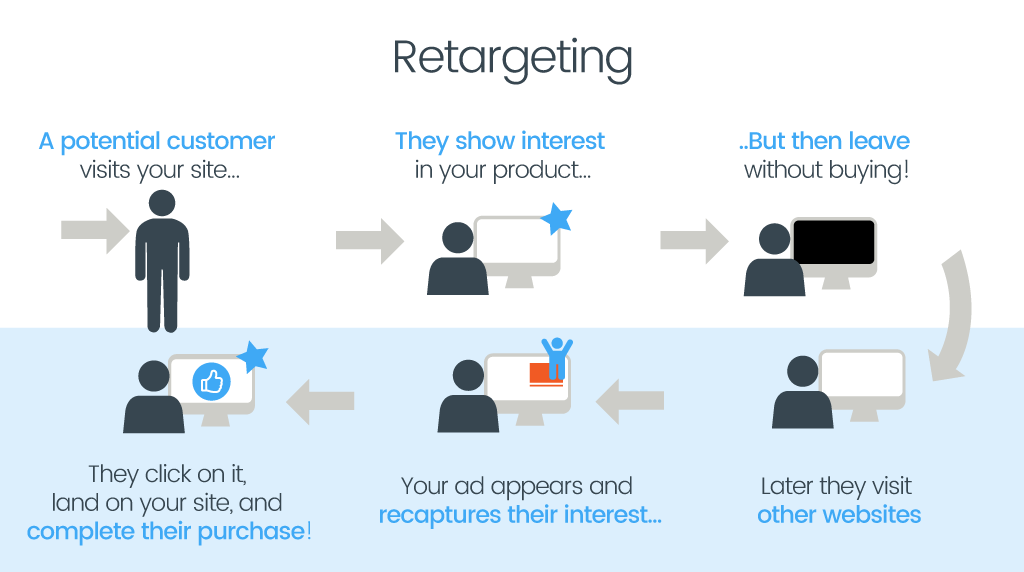
Example:
- A visitor clicks your ad but doesn’t sign up.
- You show them a follow-up ad reminding them about the offer.
- Some return and complete the purchase.
Platforms like Facebook Ads and Google Ads make this easy.
3. Track Conversions (Know Where the Money Comes From)
Spending money on ads without tracking results is a waste. You need to know which clicks turn into sales.
Use tracking tools like:
- Google Analytics – Tracks conversions from your website.
- Facebook Pixel – Helps retarget and optimize ads.
- ClickMagick – Tracks affiliate links to see what converts.
Without tracking, you’re guessing instead of making smart decisions.
Paid ads can be a goldmine or a money pit. The difference is knowing how to test, track, and optimize.
I recommend these steps:
- Start small – Don’t blow your budget on untested ads.
- Test everything – Let data decide what works.
- Retarget visitors – Most people need reminders before they buy.
If you follow these steps, paid ads can turn into a steady, scalable income source.
Tired of the same old ad strategies that burn through your budget? Win Paid Advertising: The Unconventional Marketer reveals fresh, high-converting tactics to make your ads work smarter, not harder. Discover bold, tested strategies to outshine competitors and boost ROI. Get your copy now!
6. Data Analysis & Performance Tracking

Affiliate marketing isn’t a guessing game—it’s about knowing what works and doing more of it. If you’re not tracking your traffic, conversions, and engagement, you’re just hoping for results instead of making them happen.
Let’s say you’re promoting two different affiliate products. One is getting a ton of clicks but barely any sales, while the other gets fewer clicks but converts way better.
If you’re not tracking, you won’t even realize this is happening. Instead of doubling down on the winner, you’d keep wasting time on the wrong one.
Tracking is how you find what’s profitable and cut what’s not. Without data, you have no way of knowing where your sales come from—or why they aren’t happening.
Why Tracking Matters in Affiliate Marketing
Successful affiliate marketers don’t just throw links around and hope for commissions. They use data to fine-tune their strategy.
For example, if most of your traffic comes from Instagram but barely converts, it might mean you’re attracting the wrong audience. On the other hand, if visitors from your email list buy more often, you know where to focus your efforts.
Data helps you:
- Spot high-converting traffic sources – Not all traffic is created equal. Some visitors are buyers; others just browse and leave.
- Stop wasting money – If an ad campaign isn’t converting, you need to fix it or shut it down before it drains your budget.
- Optimize your content – If certain blog posts or YouTube videos drive more affiliate sales, you create more like them.
- Improve ROI – The more you focus on what’s working, the more money you make without extra effort.
Ignoring tracking is like running a business without checking your sales. You won’t know what’s making you money—or what’s losing it.
The Tools That Make Tracking Easy
I will only mention my favorite two…
1. Google Analytics – Understand Who Visits Your Website
Google Analytics is like having a report card for your website. It tells you who’s visiting, where they came from, and what they do once they arrive.
Imagine you write a blog post reviewing a software tool. With Google Analytics, you can see:
- How many people read it.
- Where they came from (Google, Facebook, email, etc.).
- If they clicked your affiliate link or bounced without taking action.
If you notice most of your traffic leaves within seconds, something’s off—maybe your page isn’t engaging, or your headline is misleading. But if one specific post keeps bringing in sales, you know to focus on that topic.
2. ClickMagick – Track Which Affiliate Links Make You Money
Google Analytics tells you about your website, but ClickMagick tells you which affiliate links actually lead to sales.
Let’s say you write a comparison post on two different email marketing tools. You add affiliate links for both, but how do you know which one performs better?
With ClickMagick, you can:
- Track how many people click each affiliate link.
- See which link leads to more actual purchases.
- Run split tests to see if different headlines or buttons increase conversions.
If one product is converting way better, you can stop wasting effort on the other and focus your promotions where they’ll make the most money.
Without a tool like ClickMagick, you’d just be guessing.
3. Facebook Pixel – Retarget Visitors Who Didn’t Buy
Ever visit a website, leave without buying, and then see ads for that exact product everywhere? That’s Facebook Pixel in action.
Here’s how it helps affiliate marketers:
- Someone clicks your Facebook ad for an affiliate product but doesn’t buy.
- Facebook Pixel tracks them.
- Later, they see a retargeting ad reminding them about the product.
- They return and make a purchase.
This is one of the best ways to increase conversions. Most people don’t buy on the first visit, so retargeting brings them back when they’re ready.
How to Apply This in Your Affiliate Marketing Strategy
Tracking only works if you use the data to improve your strategy. Here’s what you should do:
- Set up Google Analytics – Find out where your visitors come from and what content drives clicks.
- Use ClickMagick – Track which affiliate links bring actual sales.
- Install Facebook Pixel – Retarget visitors who left without buying.
- Test & Adjust – If something isn’t converting, change it. If something works, scale it.
Affiliate marketing isn’t about working harder—it’s about working smarter. Data analysis is what separates profitable marketers from those who struggle. The more you track, the more you earn.
7. Sales & Relationship Building

Affiliate marketing means more than just pushing links—it’s about building trust. If people don’t trust you, they won’t buy from you. It’s that simple.
Think about it. When was the last time you clicked a random affiliate link from someone you didn’t trust? Probably never. But if a creator you respect recommends something, you’re more likely to check it out.
That’s why relationships matter. People don’t just buy because of the product. They buy because they believe in you.
Why Trust and Authenticity Matter
People know when they’re being sold to. They can spot fake enthusiasm from a mile away. If your recommendations feel forced or dishonest, they won’t listen. Worse, they’ll stop following you altogether.
The best affiliate marketers don’t convince people to buy. They guide them toward the right choices. They share real experiences, honest opinions, and genuine recommendations.
This means:
- Only promoting what you believe in. If you wouldn’t use it, don’t sell it.
- Being upfront about affiliate links. People appreciate honesty.
- Providing real value. Help people solve problems instead of just selling.
If people trust you, they won’t hesitate to click your links.
How to Build Trust and Strong Relationships
By being transparent, providing value, and putting your audience first, you can create lasting relationships that lead to higher conversions and loyal followers.
1. Be Transparent About Your Affiliate Links
People respect honesty. If you try to hide that you’re earning a commission, they’ll feel tricked. That kills trust.
Instead of sneaking in links, be upfront:
- Bad example: “Here’s an amazing tool that changed my life! Click here to buy.”
- Better example: “I use this tool daily, and it helps me a lot. If you buy through my link, I earn a small commission at no extra cost to you.”
See the difference? The second version feels real. It tells people what’s in it for them and what’s in it for you. That kind of honesty builds trust.
Must Read: How to Disclose Affiliate Links Transparently and Build Loyal Audiences
2. Build a Personal Brand
People follow people, not faceless websites. If they connect with you, they’ll trust your recommendations.
Here’s how you build that connection:
- Show your personality. Let people see the real you. Share opinions, experiences, and even mistakes.
- Be consistent. Stay active on your blog, social media, or YouTube.
- Tell stories. Facts are useful, but stories make your content stick.
A strong personal brand makes your audience feel like they know you. And when they feel that, they’ll listen to what you say.
3. Engage With Your Audience
Affiliate marketing isn’t a one-way street. If you ignore your audience, they’ll ignore you.
Engagement means actually talking to people:
- Reply to comments and emails. Don’t just post and disappear.
- Ask for opinions. Get your audience involved.
- Give real advice. Don’t just push products—help people make informed choices.
When people feel heard, they stick around. And when they stick around, they’re more likely to buy from you.
Affiliate marketing is about trust, not tricks. The stronger your relationships, the easier it is to make sales.
Be honest. Be yourself. Put your audience first. If they trust you, they’ll buy from you—again and again.
Conclusion
Succeeding in affiliate marketing isn’t about luck or quick hacks. It’s about developing the right skills and applying them consistently.
You need content creation to attract and engage your audience. SEO to get seen. Traffic generation to bring in potential buyers. Data analysis to track what’s working. Sales and relationship-building to earn trust. Time management to stay productive. And adaptability to keep up with changes.
Each skill builds on the others. If you create great content but ignore SEO, no one will find it. If you generate traffic but don’t track performance, you’ll waste time on what doesn’t work. If you push sales without trust, people won’t buy.
Affiliate marketing is not about promoting random products. It’s about providing real value and guiding people toward smart decisions. When you focus on helping first and selling second, success follows naturally.
Master these seven skills, stay consistent, and you’ll build a business that keeps growing—one that earns you money while genuinely helping others.
Want to build an affiliate business that makes money for years, not just months? Evergreen Affiliate Marketing breaks down the mindset, strategies, and systems top earners use to create lasting success. Just proven methods that work. Get your guide and start building real, sustainable income today!
Frequently Asked Questions
Which skill is the most important for affiliate marketing success?
There’s no single best skill—it’s a combination. Content creation, SEO, and sales skills are essential. If you can create valuable content, drive traffic, and build trust, you’ll make sales.
Do I need to be good at sales to succeed?
Yes, but not in a pushy way. Affiliate marketing is about helping, not selling. If you recommend products honestly and show how they solve problems, sales will come naturally.
How technical do I need to be?
Basic skills in website management, SEO, and tracking tools help a lot. You don’t need to be a tech expert, but you should know how to use analytics, track conversions, and optimize your content for better performance.
Can I succeed without paid advertising skills?
Yes, but paid ads can speed things up. Many affiliate marketers rely on SEO, content marketing, and email lists instead of ads. If you use paid ads, learn A/B testing, retargeting, and conversion tracking to avoid wasting money.
How does personal branding help in affiliate marketing?
People buy from those they trust. Strong personal branding makes you stand out and builds credibility. If your audience sees you as a reliable source, they’re more likely to take your recommendations seriously.
How do I keep improving my skills?
Stay updated by following industry trends, testing new strategies, and analyzing your results. Affiliate marketing changes fast, so always be learning and adjusting your approach to stay ahead.





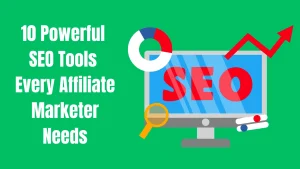
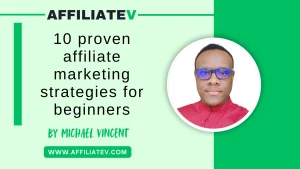
Great post! This is so helpful! You picked a key topic to focus on. I made a free guide that shows how to build an email marketing plan step by step. It covers setting goals, tracking results, and fixing common mistakes. Visit the link to see it. Thanks for sharing such helpful, straightforward tips!